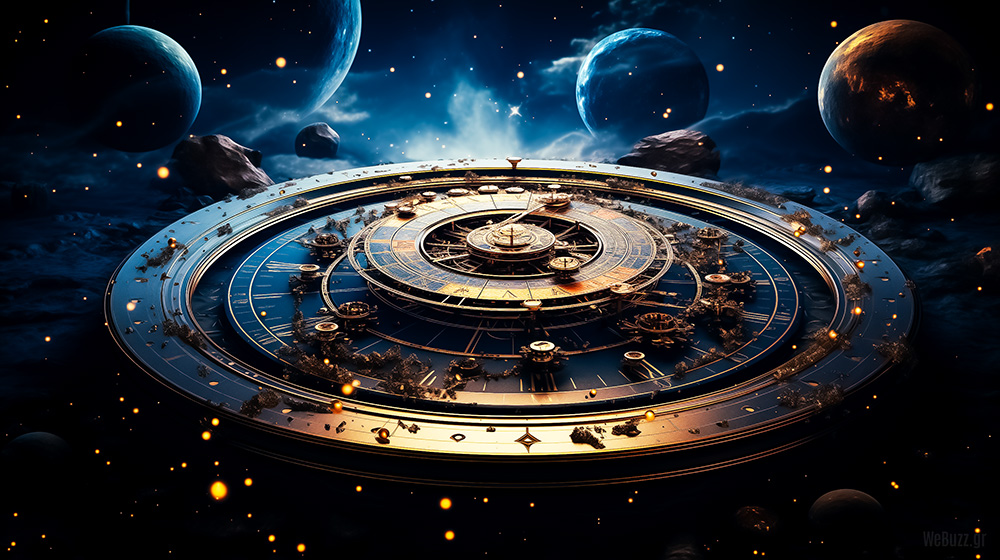How Long is a Century? Understanding the Measurement of Time
A century is a fundamental unit of time that has been used for centuries (pun intended) to measure the passage of time on a grand scale. But what exactly is a century, and how does it compare to other time measurements? In this comprehensive article, we’ll explore the definition of a century, its historical significance, and how it fits into the broader context of timekeeping.
Defining a Century
At its most basic, a century is a period of 100 years. The word “century” comes from the Latin word “centum,” meaning 100. This straightforward definition has remained consistent throughout history, with a century always representing a span of 100 years.However, the way we measure and keep track of centuries has evolved over time. In the modern Gregorian calendar, which is the most widely used calendar system globally, a century is defined as the period from January 1 of a year ending in 01 (e.g., 1901, 2001) to December 31 of a year ending in 00 (e.g., 2000, 2100).This means that the 21st century, for example, began on January 1, 2001, and will end on December 31, 2100. The 20th century, on the other hand, spanned from January 1, 1901, to December 31, 2000.
The Importance of Centuries in History
Centuries have long been used as a way to mark the passage of time and to organize historical events and eras. Many significant historical events and cultural shifts are often associated with particular centuries, such as:
- The 15th century, which saw the Renaissance and the Age of Exploration
- The 18th century, which was marked by the Enlightenment and the American and French Revolutions
- The 20th century, which witnessed two world wars, the rise of modern technology, and the civil rights movement
Dividing history into centuries helps us to better understand the context and significance of events, as well as to identify patterns and trends over time. It also provides a convenient way to measure the longevity of institutions, empires, and civilizations.
Centuries and the Gregorian Calendar
The Gregorian calendar, which is the most widely used calendar system in the world today, was introduced in 1582 by Pope Gregory XIII. This calendar system was designed to address the inaccuracies of the previous Julian calendar, which had gradually fallen out of sync with the solar year.One of the key features of the Gregorian calendar is the way it handles the transition between centuries. Unlike the Julian calendar, which treated all years divisible by 100 as the start of a new century, the Gregorian calendar only considers years divisible by 100 as the start of a new century if they are also divisible by 400.This means that while the years 1700, 1800, and 1900 were considered the start of new centuries under the Julian calendar, they are not considered the start of new centuries under the Gregorian calendar. Instead, the Gregorian calendar recognizes the years 1600, 1700, 1800, 1900, and 2000 as the start of new centuries.This subtle difference in the way centuries are defined has had significant implications for the way we understand and record history, particularly in the context of the transition from the Julian to the Gregorian calendar.
The Measurement of Time
Centuries are just one of many units of time that we use to measure the passage of time. Understanding how centuries fit into the broader context of timekeeping can help us to better appreciate the significance of this unit of measurement.
Smaller Units of Time
At the smallest end of the timekeeping spectrum, we have units of time that measure the passage of time in seconds, minutes, and hours. These units are essential for organizing our daily lives and activities, and they form the foundation of our timekeeping systems.
- 1 second = the basic unit of time, representing the duration of 9,192,631,770 periods of the radiation corresponding to the transition between the two hyperfine levels of the ground state of the cesium-133 atom.
- 1 minute = 60 seconds
- 1 hour = 60 minutes
Larger Units of Time
Moving up the scale, we have larger units of time that measure the passage of time on a grander scale. These include:
- 1 day = 24 hours
- 1 week = 7 days
- 1 month = approximately 30 days (the length of a month can vary depending on the calendar system)
- 1 year = 365 days (or 366 days in a leap year)
- 1 decade = 10 years
- 1 century = 100 years
- 1 millennium = 1,000 years
These larger units of time are essential for understanding and organizing historical events, as well as for tracking the long-term trends and patterns that shape our world.
The Concept of Time
Underlying all of these units of time is the fundamental concept of time itself. Time is a complex and multifaceted phenomenon that has been the subject of philosophical, scientific, and cultural exploration for centuries.At its core, time is a measure of the duration of events and the interval between them. It is a fundamental aspect of our experience of the world, and it shapes the way we perceive and interact with our environment.However, the nature of time is not always straightforward. Theories of relativity, for example, suggest that the passage of time can be affected by factors such as the speed of an object or the presence of strong gravitational fields. This has led to a deeper understanding of the complex and dynamic nature of time.
The Significance of Centuries
Centuries have long been a significant unit of time, both in terms of their historical importance and their cultural significance. Here are some of the key ways in which centuries have shaped our understanding of the world:
Historical Significance
As mentioned earlier, centuries have been used to mark the passage of time and to organize historical events and eras. The division of history into centuries has helped us to identify patterns and trends, and to better understand the context and significance of specific events.For example, the 20th century is often associated with the two world wars, the rise of modern technology, and the civil rights movement. By understanding the events and trends of this century, we can gain a deeper appreciation for the world we live in today.
Cultural Significance
Centuries have also played a significant role in shaping our cultural and artistic traditions. Many cultural movements and artistic styles are associated with particular centuries, such as the Renaissance of the 15th and 16th centuries or the Enlightenment of the 18th century.The cultural significance of centuries is also reflected in the way we celebrate and commemorate the passage of time. The turn of a new century is often marked by grand celebrations and the reflection on the achievements and challenges of the previous century.
Societal Significance
Centuries have also had a significant impact on the way we organize and structure our societies. Many institutions, such as governments, businesses, and educational systems, are often organized and structured around the passage of centuries.For example, the founding of many universities and other educational institutions can be traced back to particular centuries, reflecting the changing priorities and values of different eras.
Technological Significance
The passage of centuries has also been marked by significant technological advancements that have transformed the way we live and work. From the industrial revolution of the 18th and 19th centuries to the digital revolution of the 20th and 21st centuries, each century has been defined by its own unique technological innovations.These technological advancements have had a profound impact on our daily lives, changing the way we communicate, travel, and interact with the world around us.
Conclusion
In conclusion, a century is a fundamental unit of time that has played a significant role in shaping our understanding of the world. From its historical and cultural significance to its impact on our societies and technological advancements, the century has been a crucial measure of the passage of time.As we continue to grapple with the complexities of time and the ever-changing world around us, the concept of the century will likely continue to be an important tool for organizing and understanding our experiences. Whether we are reflecting on the achievements of the past or looking towards the future, the century will remain a vital part of our timekeeping and our understanding of the world.
FAQ
What is the definition of a century?
A century is a period of 100 years. The word “century” comes from the Latin word “centum,” meaning 100.
How is a century defined in the Gregorian calendar?
In the Gregorian calendar, a century is defined as the period from January 1 of a year ending in 01 (e.g., 1901, 2001) to December 31 of a year ending in 00 (e.g., 2000, 2100).
What are some examples of significant historical events associated with particular centuries?
Some examples of significant historical events associated with particular centuries include:
- The 15th century: The Renaissance and the Age of Exploration
- The 18th century: The Enlightenment and the American and French Revolutions
- The 20th century: The two world wars, the rise of modern technology, and the civil rights movement
How do centuries fit into the broader context of timekeeping?
Centuries are one of many units of time used to measure the passage of time, ranging from seconds and minutes to decades and millennia. These larger units of time are essential for understanding and organizing historical events and long-term trends.
What is the cultural significance of centuries?
Centuries have played a significant role in shaping our cultural and artistic traditions, with many cultural movements and artistic styles being associated with particular centuries. The turn of a new century is also often marked by grand celebrations and reflection on the achievements and challenges of the previous century.
Additional Information
According to Wikipedia, a century is a period of 100 years. The Gregorian calendar, which is the most widely used calendar system in the world today, defines a century as the period from January 1 of a year ending in 01 (e.g., 1901, 2001) to December 31 of a year ending in 00 (e.g., 2000, 2100).
| Unit of Time | Definition |
|---|---|
| Second | The basic unit of time, representing the duration of 9,192,631,770 periods of the radiation corresponding to the transition between the two hyperfine levels of the ground state of the cesium-133 atom. |
| Minute | 60 seconds |
| Hour | 60 minutes |
| Day | 24 hours |
| Week | 7 days |
| Month | Approximately 30 days (the length of a month can vary depending on the calendar system) |
| Year | 365 days (or 366 days in a leap year) |
| Decade | 10 years |
| Century | 100 years |
| Millennium | 1,000 years |
Source: Wikipedia



